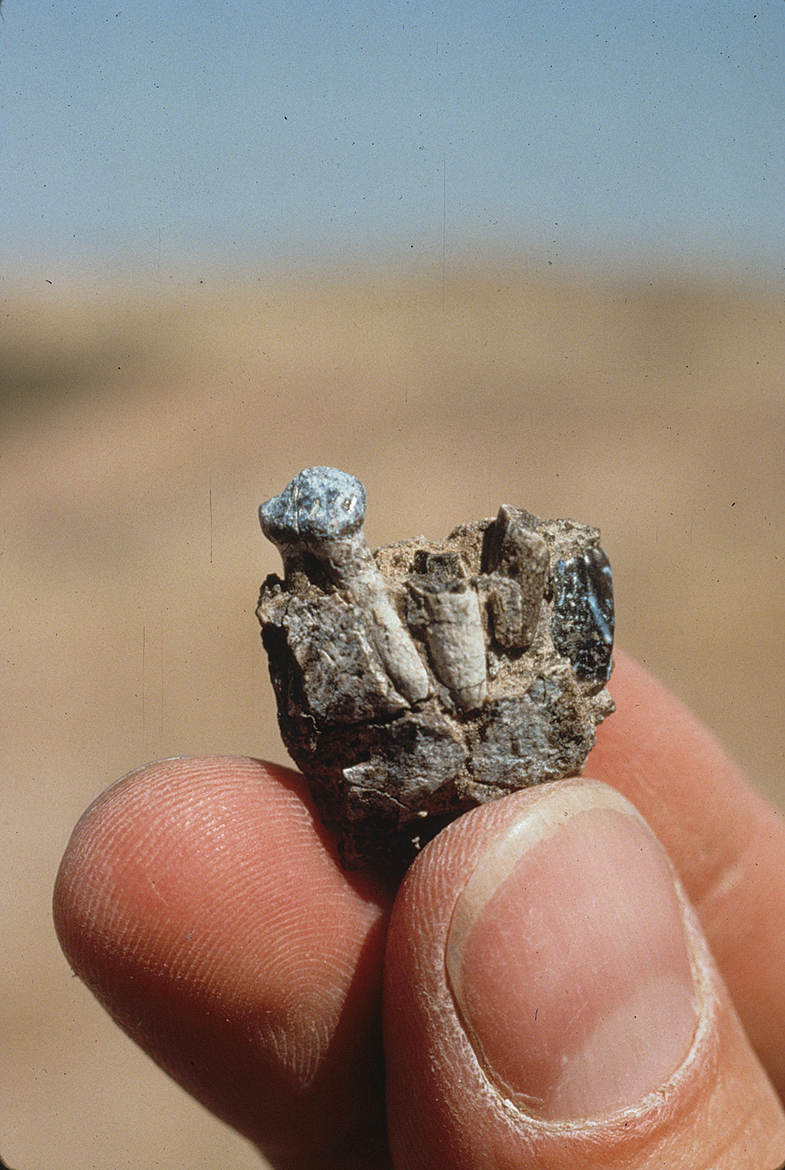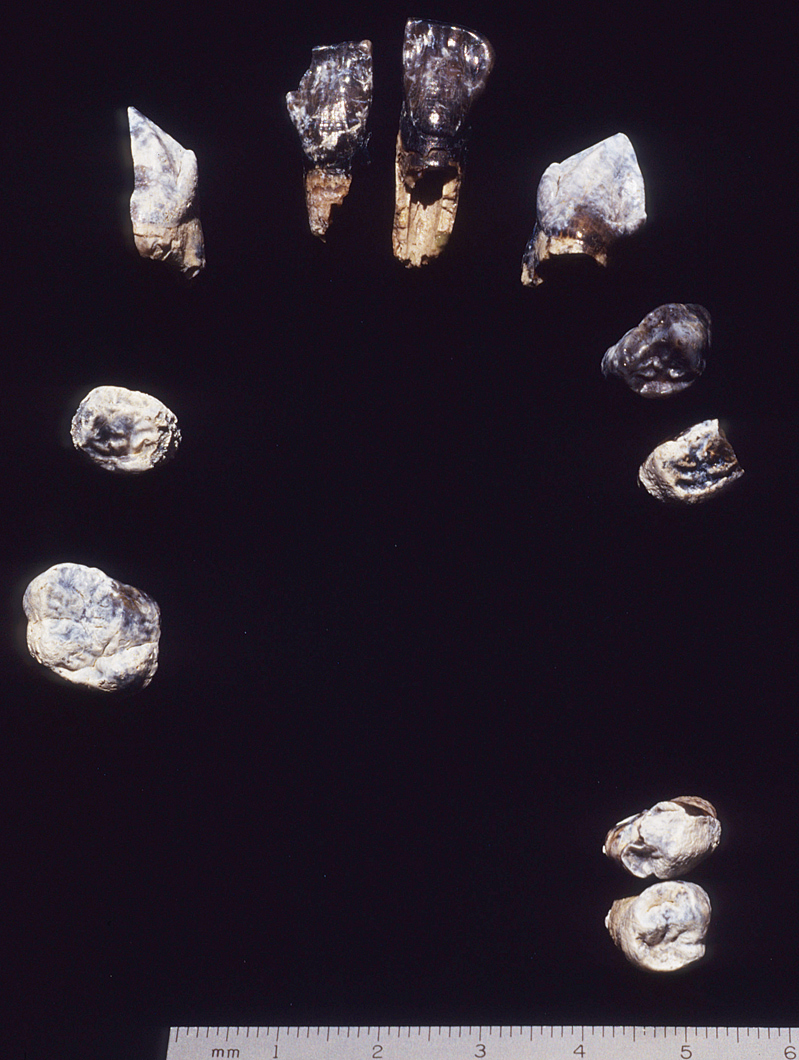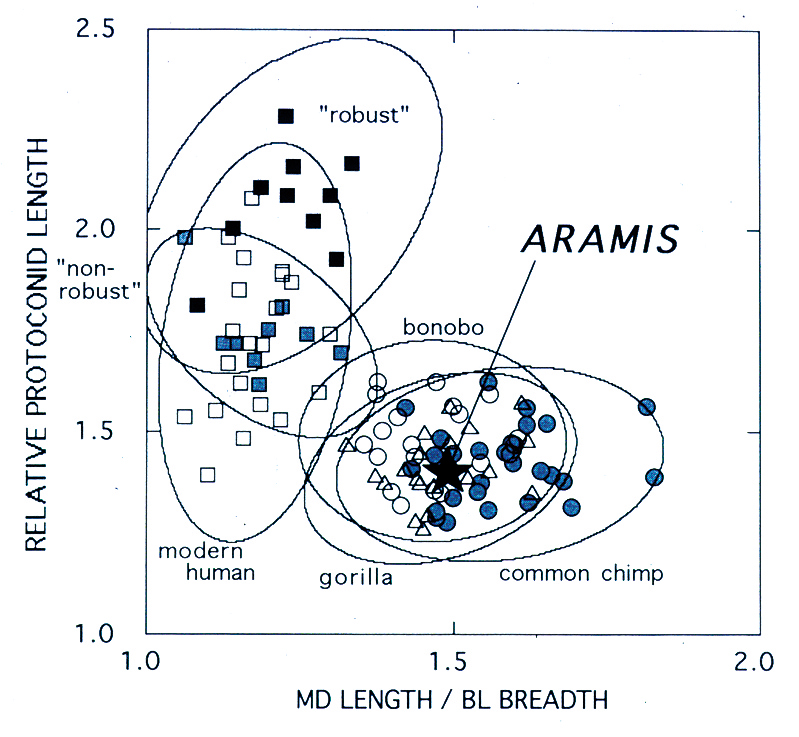B45
The type specimen of Ardipithecus ramidus
the fossils and the naming
The first series of the Ardipithecus ramidus fossils were discovered in 1992 and 1993/94, at an area called Aramis in the Middle Awash valley of the Afar Rift in Ethiopia. These fossils were described as a new species in the fall of 1994. The fossils included a child mandible fragment with deciduous molar which was as narrow as in apes. Another juvenile dental set, represented by the diagnostic C/P3 complex, was designated the holotype of the new species. These fossils were definitively more primitive than any known species of the genus Australopithecus. However, pending discovery of even more informative fossils and body parts, the fossils were conservatively published as a new species of the genus Australopithecus. During the 1994/95 field work, just after publication of the new species, the first pieces of a partial skeleton were discovered. This enabled the naming of the new genus Ardipithecus. In the Afar language, “Ardi” means “ground” and “ramid” means “root.” Ardipithecus ramidus translates to “the root of the ground ape.” (Gen Suwa)
References
諏訪 元・洪 恒夫(2006)『アフリカの骨、縄文の骨―遥かラミダスを望む』東京大学総合研究博物館。
White, T. D., Suwa, G. & Asfaw, B. (1994) Australopithecus ramidus, a new species of early hominid from Aramis, Ethiopia. Nature 371: 306-312.
White, T. D., Suwa, G. & Asfaw, B. (1995) Australopithecus ramidus, a new species of early hominid from Aramis, Ethiopia. Nature 375: 88.



